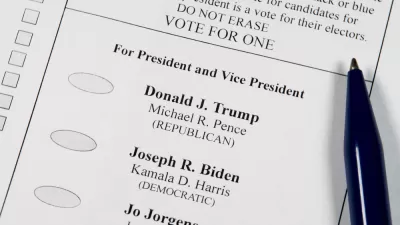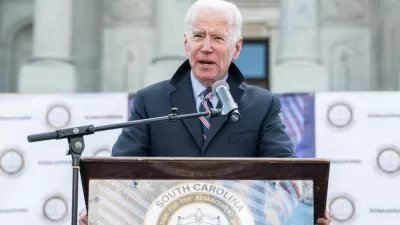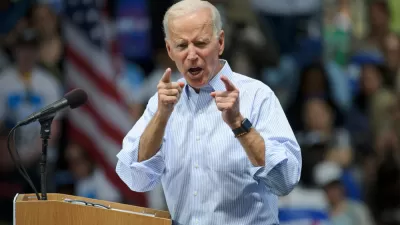Last night's Democratic candidate debate was held in the nation's second largest city, but like previous debates, it left urban issues largely unaddressed.

Alan Greenblat writes about the fundamental lack of urban representation in presidential campaigns:
With less than two months remaining before the Iowa presidential caucuses, a number of Democrats have been complaining that the early voting states of Iowa and New Hampshire are too white to be representative of the country as a whole.
They could just as easily complain that the states are too rural to reflect either the country or the party's own geographic base.
The largest city in either of the two states is Des Moines. At 215,000 residents, it doesn't make the top 100 most populous cities in the country, notes Greenblat.
There are several ongoing efforts to fill the urban gap during the presidential primary—the National League of Cities "established a 2020 presidential election task force, and last month it released its list of top local issues it wants candidates to address," and the U.S. Conference of Mayors "co-sponsored a presidential forum in Waterloo, Iowa, with mayors interviewing five of the Democratic contenders about local issues"—but there's still a lack of attention paid to cities, according to Greenblat.
What's more, according to Greenblat, an anti-urban partisanship plays out in state legislatures too. Numerous mayors and former mayors, including one running for president, are cited in the article trying to coalesce an urban agenda for presidential campaign politics.
FULL STORY: Why Presidential Candidates Don’t Address Urban Issues

Alabama: Trump Terminates Settlements for Black Communities Harmed By Raw Sewage
Trump deemed the landmark civil rights agreement “illegal DEI and environmental justice policy.”

Study: Maui’s Plan to Convert Vacation Rentals to Long-Term Housing Could Cause Nearly $1 Billion Economic Loss
The plan would reduce visitor accommodation by 25% resulting in 1,900 jobs lost.

Why Should We Subsidize Public Transportation?
Many public transit agencies face financial stress due to rising costs, declining fare revenue, and declining subsidies. Transit advocates must provide a strong business case for increasing public transit funding.

Wind Energy on the Rise Despite Federal Policy Reversal
The Trump administration is revoking federal support for renewable energy, but demand for new projects continues unabated.

Passengers Flock to Caltrain After Electrification
The new electric trains are running faster and more reliably, leading to strong ridership growth on the Bay Area rail system.

Texas Churches Rally Behind ‘Yes in God’s Back Yard’ Legislation
Religious leaders want the state to reduce zoning regulations to streamline leasing church-owned land to housing developers.
Urban Design for Planners 1: Software Tools
This six-course series explores essential urban design concepts using open source software and equips planners with the tools they need to participate fully in the urban design process.
Planning for Universal Design
Learn the tools for implementing Universal Design in planning regulations.
Caltrans
Smith Gee Studio
Institute for Housing and Urban Development Studies (IHS)
City of Grandview
Harvard GSD Executive Education
Toledo-Lucas County Plan Commissions
Salt Lake City
NYU Wagner Graduate School of Public Service





























